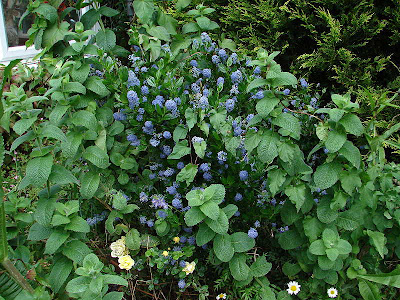
I have various patches of Ox-eye Daisies around the back garden. They are untidy things but I love them for all the insects they attract. As soon as the sun comes out all sorts of insects visit them. Today they had some Carpet Beetles (
Anthrenus verbasci) on them. The larvae of Carpet Beetles eat various fibres including wool and therefore can be a pest of carpets. The adults feed on pollen which is why they are attracted to the pollen-rich Ox-eyes.


This is a capsid bug,
Calocoris major.

And another bug.

To my amazement I had a new (to me) hoverfly appear –
Eupeodes cortollae. It is a common species but I have never photographed it before. That brings my total of hoverfly species to 44, I think.

I think this is
Colletes succinctus – a bee. I’m not very good at identifying bees. It doesn’t help that the key identification features are often the wing pattern – which is hard to see – and the length and breadth of the tongue – even harder!











































